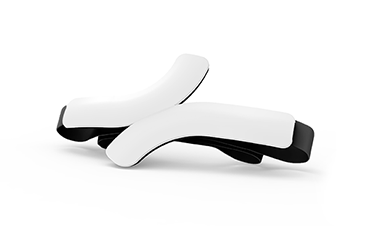If you are an athlete or a heart health patient or enthusiast, you might have come across the term heart rate variability. Learn here about the importance of this metric and what it says about your heart.
What is heart rate variability (HRV)?
Heart rate variability measures the changes in the time interval between your individual heart beats. Most of us know what a heart rate is but might be not aware that these heartbeats do not occur with same intervals and pattern. Heart rate variability is the measurement of the variation in the beat-to-beat interval because a heart beating 60 times per minute beat doesn’t necessarily beat exactly one time per second. Some beats might be closer to each other and some further apart.
How do you measure HRV?
You measure heart rate variability with a heart rate monitor or a sensor that straps around your chest. The most accurate way to measure HRV is to use a medically accurate ECG monitor, also called electrocardiogram, such as QardioCore wireless ECG/EKG monitor.
Why should you measure HRV?
Heart rate variability is directly linked to the body’s interdependent regulatory systems, measuring their efficiency and health. An optimal HRV reflects a healthy functioning body with well performing self-regulatory capacity and a capability to adapt in a timely matter and react to changes. On the other hand, reduced HRV has been shown to indicate a potential heart problem related to a heart attack or congestive heart failure.
If you are looking for a medically accurate way to measure your HRV, you can do that easily with QardioCore wireless ECG monitor that also tracks your activities, respiratory rate and many other heart health metrics.




